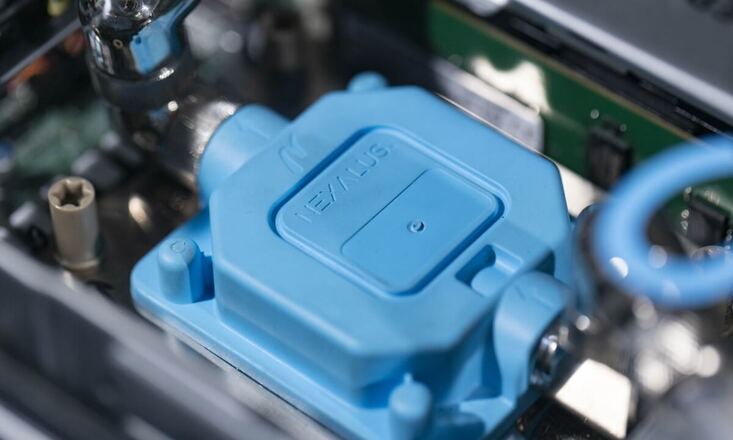
For more than two decades, x86 pizza box servers have quietly powered the digital world. Compact, stackable, and general-purpose, they became the bedrock of modern enterprise and cloud computing. These servers – and the CPUs that drive them – have grown steadily stronger over the years, raising average rack power density from around 3 kilowatts (kW) in the late 1990s to roughly 10 kW today.
In traditional data centers, this increase was manageable. Facilities were typically built with 30-year life cycles in mind, allowing gradual adaptation over successive server refreshes. When energy demand climbed, engineers simply added more white space for expansion. That incremental model, however, is collapsing under the weight of artificial intelligence.
The AI Acceleration Problem
AI workloads are changing the game. Based on current GPU shipments for AI server applications, analysts predict that up to 60% of new servers deployed in the next year will support AI processing. Unlike standard servers, these AI-focused systems can host multiple CPUs, data processing units (DPUs), and as many as 16 GPUs in a single chassis. The result is a new class of ‘super servers’ capable of training large language models and performing complex inference tasks – but they consume massive amounts of power and typically require liquid cooling to stay operational.
Each new generation of GPUs intensifies the strain. NVIDIA’s rapid release cycle – driven by its DGX SuperPod architectures – illustrates the point vividly. In 2022, racks using NVIDIA’s A100 GPUs averaged 25 kW per rack. By 2023, the H100 boosted that to nearly 40 kW. A year later, the GH200 platform doubled it again, reaching 72 kW per rack. When NVIDIA’s GB200 begins shipping in 2025, it is expected to quadruple that figure to roughly 132 kW per rack, and by 2026, the next-generation VR200 GPUs could push densities beyond 240 kW per rack.
Engineering at the Edge of Feasibility
Such exponential growth poses major challenges for data center designers. A facility built to handle 10 kW racks can’t simply scale to 132 kW or more without extensive redesign. The jump demands new approaches to cooling, power distribution, and structural layout.
Hybrid systems combining air and liquid cooling are now essential – but as density rises, so do the risks of overheating, inefficiency, and costly downtime. In the past, data center operators had decades to optimize infrastructure for modest power gains. Now, they must redesign and deploy next-generation facilities in as little as one or two years, often without the luxury of testing or iteration.
The rapid pace of GPU innovation has effectively erased the steady, incremental improvement cycle that once defined data center development. Hardware performance is now advancing faster than the supporting physical infrastructure can realistically evolve, leaving operators under pressure to redesign facilities in record time to keep up.
Bridging the Gap with Digital Twins
To close that gap, many experts are turning to digital twin technology – high-fidelity virtual models that simulate power, cooling, and airflow before a single rack is installed. Using these tools, designers can model and optimize layouts in software, reducing risks before committing to costly construction.
A digital twin can replicate entire data center systems, from energy flow and redundancy to thermal dynamics. This allows engineers to test scenarios that would be impossible – or too dangerous – to recreate in real facilities. However, such simulations depend heavily on accurate data and must be carefully calibrated. “The software is only as smart as the data you feed it,” cautions one data center consultant. “You need to train your model on simpler systems before trusting it for complex AI clusters.”
Electrical design automation software is also streamlining the process, allowing early estimates of power demand and system performance under failure conditions. This helps reduce errors and cost overruns in the planning phase.
Reference Designs and Modular Thinking
Another emerging solution is the use of reference designs issued by major power and cooling suppliers. These blueprints provide pre-tested configurations optimized for NVIDIA’s AI systems, offering detailed schematics, bills of materials, and performance specifications. Local engineering teams can adapt them to regional regulations, accelerating deployment compared to fully bespoke designs.
While reference designs save time, the fastest path to deployment may come from prefabricated modular infrastructure. These factory-built units – containing pre-integrated power, cooling, and IT systems – arrive on-site ready for installation. Once connected to utilities, they function as plug-and-play data center segments.
The latest prefabricated AI modules are built specifically for GPU clusters and include racks, manifolds, busways, and liquid-cooling systems. Once delivered, operators need only install servers and connect power and cooling lines. Prefabrication not only shortens construction timelines but also ensures components are tested and optimized before deployment, minimizing on-site risk.
The Road Ahead
As AI chip innovation accelerates, the data center sector is entering a period of forced adaptation. Facilities must be designed years ahead of each GPU generation, often without proven benchmarks. The cycle is unrelenting: every 12 months, more powerful -and more energy-hungry – hardware pushes the limits of infrastructure engineering.
For operators and enterprises, success will depend on balancing innovation with pragmatism. Digital simulation, modular construction, and strong partnerships with technology vendors may prove to be the only viable strategies for staying ahead. The age of the general-purpose server is ending, replaced by a new frontier of extreme-density AI infrastructure where every watt and every degree matters.
This scope of this article is based on a previous article by Forbes.
FAQ: Adapting Data Centers for the AI Era
Why are AI servers so power-intensive?
AI servers rely on GPUs and DPUs optimized for parallel processing, which consume significantly more energy than CPUs. Each new GPU generation adds complexity and performance, doubling or tripling power requirements per rack.
What is the biggest design challenge for next-generation data centers?
Cooling. Traditional air-based systems cannot handle the heat generated by high-density AI racks, making liquid cooling and hybrid approaches essential to prevent thermal overload.
How do digital twins help in AI data center design?
Digital twins simulate physical infrastructure digitally, enabling engineers to model airflow, energy distribution, and failure scenarios before construction. This reduces risks, costs, and deployment time.
What are reference designs and why are they important?
Reference designs are vendor-issued templates for power and cooling configurations. They accelerate design, reduce errors, and ensure compatibility with the latest AI hardware releases.
Are prefabricated modules the future of data center construction?
For AI-driven facilities, yes. Prefabricated modules offer pre-tested, scalable infrastructure that can be deployed rapidly, enabling operators to match Nvidia’s annual GPU upgrade cycle without rebuilding from scratch.


